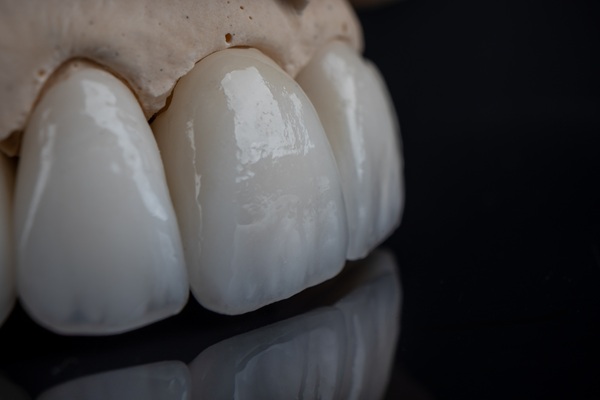Dental Restoration 101: An Overview of Zirconia Crowns

Dentists can repair the smile with a variety of dental restorations, and zirconia crowns are an increasingly popular option. Not only do these crowns look natural, but they are also highly resistant to cracking and wear. This makes zirconia crowns an effective, long-lasting restoration for moderate to severe tooth damage.
Zirconia crowns: What are they?
Zirconia crowns are dental restorations made from zirconium dioxide, a type of ceramic that is extremely strong and biocompatible. Unlike metal-based crowns, zirconia offers the dual advantage of durability and a tooth-colored appearance. As such, general, family, and cosmetic dentists recommend this material for both back and front teeth.
Zirconia crowns can be either monolithic (made from a single block of zirconia) or layered (with a porcelain coating for enhanced aesthetics). The monolithic type is known for its superior strength, making it great for molars and areas subject to heavy chewing. Conversely, layered zirconia provides a more natural translucency and is a popular option for front teeth where appearance is a higher priority.
The process of getting zirconia crowns
The process of receiving a zirconia crown typically involves two appointments. During the first visit, the general, family, or cosmetic dentist prepares the tooth by removing decay or damaged portions and shaping it to accommodate the crown. After this, they take impressions before sending them to a dental laboratory that creates the crown. Computer-aided design and manufacturing (CAD/CAM) techniques have further improved the precision and turnaround time for zirconia crowns.
Next, the dentist places a temporary crown to preserve the tooth during the first appointment. Once the zirconia crown is ready, the patient returns for the second appointment, during which the dentist checks the fit and appearance before cementing it in place.
Pros and cons of zirconia crowns
Zirconia crowns offer advantages over traditional crown materials. Their benefits include:
- Strength and durability. Zirconia is significantly stronger than porcelain and is capable of withstanding biting forces without chipping.
- Aesthetic appeal. The tooth-colored material closely mimics the appearance of natural enamel, especially when layered with porcelain.
- Minimal tooth reduction. In most cases, the dentist will remove less tooth structure than they would have needed to for other crown materials.
However, like all restorations, zirconia crowns also come with a few considerations. For one, they can be more costly than other options like metal or porcelain-fused-to-metal (PFM) crowns, at least without insurance. Zirconia may also contribute to wear on opposing natural teeth over time if not properly polished or adjusted. A general, family, or cosmetic dentist can work to minimize these risks so that the patient can better enjoy the benefits.
Long-term care
Zirconia crowns can last between 10 and 15 years with proper care. This includes consistent oral hygiene at home, routine dental checkups, avoiding staining foods and drinks, and using a night guard to prevent wear from grinding. These practices help maintain crown durability and general oral health.
Want to know more about zirconia crowns?
Patients looking for a natural-looking and long-lasting dental restoration may benefit from zirconia crowns. To learn more about this option, contact our Brooklyn office. We can evaluate the problem teeth and recommend the most appropriate treatment.
Request an appointment here: https://nybrooklyndental.com or call Nostrand Dental at (718) 513-9685 for an appointment in our Brooklyn office.
Check out what others are saying about our dental services on Yelp: Zirconia Crowns in Brooklyn, NY.
Related Posts
Whether you are about to book an appointment for tooth implants or you have just undergone the procedure, you probably want to learn proper aftercare to ensure healing and recovery. One of the questions that patients often ask is what and what not to eat after surgery. Although placing implants ensures that you have dental…
Searching for a dentist near me often begins with convenience, but the range of services offered should be a top priority. A comprehensive dental practice not only addresses routine care but also provides advanced treatments to support long-term oral health. From preventive visits to restorative and cosmetic procedures, having access to the right services under…
TMJ treatment from a general dentist fosters relief for individuals who experience jaw discomfort, clicking sounds, and restricted movement in the temporomandibular joints (TMJs). These joints, located on each side of the face, allow essential motions such as chewing and speaking. When the joint or surrounding muscles become inflamed, misaligned, or stressed, everyday tasks may…
A deep dental cleaning is a great way to improve your periodontal health, particularly for patients who have periodontitis (an advanced form of gum disease). The following is a review of when a deep dental cleaning (also called a scaling and root planing) might be recommended. The most notable signs that indicate a need for deep…
